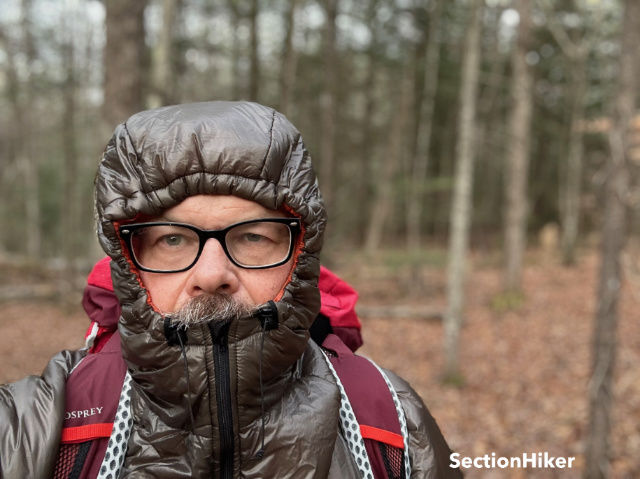When purchasing a lightweight insulated jacket for hiking or backpacking, should you get a down or synthetic jacket with or without a hood? This is a valid question since many companies make both, and each has pros and cons.
Hoods Add Warmth
Hoods provide added warmth to insulated jackets. They insulate your neck even when you don’t have the hood on, blocking the wind and providing added insulation around the back and sides of your neck. But hoods are maximally effective when you can cinch the front around your face to trap the warmth generated by your neck and head and prevent the wind from stripping it away. Without a front hood adjustment, the value of a hood is greatly diminished in terms of warmth retention.

Front Adjustable Hoods
Front adjustable hoods are rare, however, on lightweight insulated jackets and are a feature that is only generally found on much heavier insulated mid-weight jackets or parkas. Some exceptions are the synthetic-insulated Enlightened Equipment Torrid Jacket, the down-insulated Feathered Friends EOS Jacket, and the Montbell Ex Light Down Anorak. It’s no accident that all these are made by companies catering to backpackers who use these jackets as head insulation with hoodless sleeping quilts.
Lightweight Hoodless Jackets
If you wear a lightweight hoodless jacket with a mid-layer hoodie for neck insulation and/or a fleece or wool beanie for head insulation, you can enjoy many of the same benefits as wearing a jacket with a hood but with far greater flexibility since you can layer with them when not wearing the jacket. This is an alternative worth serious consideration if you plan to carry these garments anyway and want to keep functional redundancies to a minimum in your clothing system. Furthermore, while you can wear a hoodie or beanie when hiking, you can’t wear an insulated jacket without sweating out your mid-layer, which is best avoided.
Hoodless jackets are also preferred if you have to wear them with a protective helmet like a ski, riding, or motorcycle helmet because a hood will interfere with the fit. The exception to this are hooded jackets designed to fit over climbing helmets. However, their hoods are usually too large and awkward to be worn without a climbing helmet, so they are best avoided for hiking or backpacking use.

Insulated Hoods Without Jackets
Of course, you can also buy a standalone insulated hood, particularly for sleeping, and use it with or without an insulated jacket. Enlightened Equipment, Montbell, and Zpacks all make them. Most people don’t use these, but it is an option worth considering if you want maximum sleeping warmth, particularly in spring or autumn, in addition to the flexibility of using a hoodie or beanie independently.
SectionHiker is reader-supported. We only make money if you purchase a product through our affiliate links. Help us continue to test and write unsponsored and independent gear reviews, beginner FAQs, and free hiking guides.
